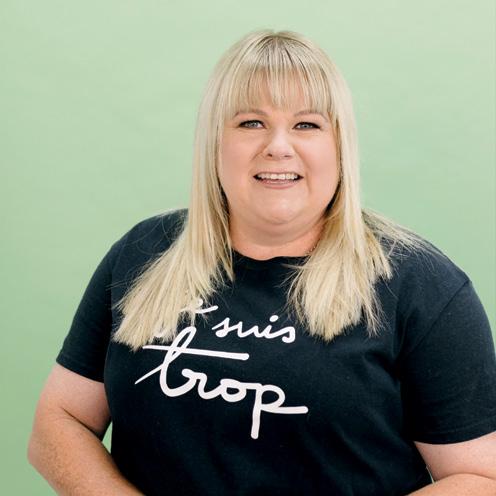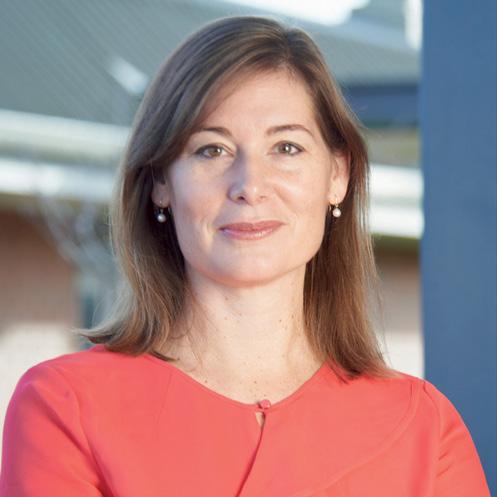
10 minute read
VIEW FROM THERE
ment projects? All I can say is that based on geology, fossil record, and all credible knowledge, the average conditions for our area over the past 2.4 million years has been several hundred feet of glacial ice. For us, the weather changes drastically, not just from day to day. For us, our average rainfall for most of the 20th century did not exceed the annual evapotranspiration rates. In other words, we used up all the rain and snow we received. Our closest small stream, the Wild Rice River, did not have a stream flow for some years. In 1997, just one year, the Wild Rice River had more water go down it then it did in the entire 1970s. What had happened was the annual precipitation had exceeded the annual water use. Also, we are in a recently glaciated area. Our drainage systems are not mature, and we are referred to as the “Prairie Pothole” region. Most of these small depressions only held water for short periods of time, mostly in the spring, or after a rare heavy thunderstorm. Since 1993 the frequency of thunderstorms and rainfalls exceeding two inches has increased. To the delight of many fishermen, these depressions, or “potholes” have grown into lakes filled with fish. Ice fishing is popular, with anglers trying to keep newfound locations secret. Managing irrigation in this new normal proved to be interesting. In the old days, I had people tell me, “Why would I hire somebody to tell me when to irrigate when we run the irrigators continuously from the middle of June to the middle of August?” New situations came up. How do you manage high water table soils? Can you trust a forecast? What happens when an irrigator sits for two weeks? Also, diseases became more prevalent, especially Late Blight, which is the old scourge that caused the Irish potato famine in 1849. Tile drainage, which was as rare as a two-inch rain in the 1980s, has become a must for irrigation. My Dad, when involved in the early days of the irrigation project, always said you can’t irrigate without drainage. That is 100 percent correct. The Heimbuch farm, now operated by Tom’s sons, was one of the first to install tile drainage. Had they not had a good drainage system they would have had very little land to farm in the last two years. What will happen next? The economics, weather, and technology have all changed and I’m sure will continue to change.
Tom passed away in May of 2020, and Durant in May of 2021. The spirit of Tom and Durant will always be with us, to provide leadership, encouragement, and willpower. Water and soil will always need to be managed to maintain quality, availability, and productivity. We must not forget we need to be responsible with how we treat these indispensable resources. Irrigation is essential in our area to grow crops like potatoes and onions. As we found out last year, it can still get dry, and ranchers who had irrigated alfalfa were very fortunate. Crops such as corn, dry beans, and soybeans can do well in dryland, but do better under irrigation. Personally, irrigation was the backbone of my career. As we go forth, we have unbelievable capability to secure a brilliant future, and irrigation will be an essential component.
Advertisement
Irrigation is essential in North Dakota to grow crops like potatoes and onions. Last year showed it can still get dry, and ranchers who had irrigated alfalfa were very fortunate. Crops such as corn, dry beans, and soybeans can do well in dryland, but do better under irrigation.
Kelly Cooper is the research agronomist at North Dakota State University’s (NDSU) Carrington Research Extension Centre, and at NDSU’s Oakes Irrigation Research Site on the Robert Titus Research Farm. His interest in irrigation developed from an early age, due to growing up in an area which saw the hardship that came from drought.
IrrigationNZ training in Northland
A good day to be a duck. It was wet and stormy weather for the Performance Assessment course as the students got stuck in with the practical work.



Training and the upskilling of our industry has continued to be a large focus for IrrigationNZ. Our third Certificate in Irrigation System Performance Assessment course for 2022 was held in Northland in the first week of July. Twelve students braved some rather wet weather to join tutor Stephen McNally in the field and in the classroom for the three-day horticulture focused block course.
Stephen said, “Over the last year we have seen over 30 students attend the Irrigation Design qualification and more than 60 working on the Performance Assessment course. It’s so gratifying to get positive feedback from those attending – that the training will make a real difference in their work in the industry. Our Commercial Manager, Julie Melhopt, has done a massive job coordinating the enrolments, supporting the tutors, managing the venues across the country, and keeping students on track for their assignments.”
Through the government’s Targeted Training and Apprenticeship Fund, IrrigationNZ has put over 60 students through the Certificate in Irrigation System Performance Assessment ‘fees-free’, running five courses around the country in the last 12 months.
As this magazine goes to print our Bay of Plenty course run by Vicky Bloomer will be getting underway.
If you are interested in learning something new and/or completing irrigation qualifications please check out the Upcoming Events page on our website. Please contact us via admin@irrigationnz.co.nz if there is a particular course you would like more information about.

Photos, top left: Irrigation is crucial to growing the perfect avocado in Northland. Top right: Mapua Avocado Orchard Manager John Barlow with Stephen McNally. Above: Burnage Orchard’s water storage pond, with avocado trees in the background.

















Fernside dairy farmer, Julie Bradshaw, says sharing scientific data in a way that was easily understandable and useful for farmers helped to create close bonds between landowners and NIWA scientists during a five-year joint co-innovation study.
Julie is participating in a six-month farming innovation project, which examines how the next generation of farmers are using innovative approaches to improve their farming practices. Waimakariri Landcare Trust (WLT) and Waimakariri Irrigation Limited (WIL) have partnered with the Ministry for Primary Industries (MPI) for the project, with support from MPI’s Sustainable Food and Fibre Futures fund along with Environment Canterbury, Ballance, and DairyNZ.
“It was a reciprocal relationship between our farmers and NIWA. They had no experience of dairy farming, but it worked because we were willing to listen to each other and NIWA had a genuine desire to provide us with data that was practical and helpful.”
Fellow co-innovation study group member, Stu Bailey, a fourth generation Flaxton dairy farmer, said working with NIWA helped him make better farming decisions, especially on irrigation.
“They developed an easy-to-use tool that helped us to do things better. Before the project we had limited data, but we now have a much broader understanding of what is really happening under the ground.”
“In the past you would look at the top of the soil and think it looked too wet or too dry, but actually it could be a bit dry on the top and wetter underneath where the grass roots are, and you wouldn’t know that unless you have the moisture probes to measure it.”
Stu said having access to a broad range of data opened his eyes to how useful science can be when it is used in a practical way.
“We are looking at other ways to use the information. Having the data helps us to feel confident that we are making scientifically based decisions. We have improved our irrigation infrastructure to better meet the demands of the soil and the grass, which means we are now using less water.”
Julie would love to see further studies conducted to gauge the benefits gained during and after the project. She believes the project provides an excellent example for other groups who want to successfully engage with farmers to improve environmental outcomes.
“The difference with this project was that NIWA was responsive to our needs. We worked together to understand what data would be most useful to help us meet environmental regulations, and how best to receive this information.” / Continued over
Fernside farmer Julie Bradshaw and Flaxton farmer Stu Bailey were able to make better informed decisions for their farms after participating in a five-year National Institute of Water and Atmosphere (NIWA) co-innovation study.
“For example, in the beginning the information on moisture capacity of the soil was extremely basic and displayed in a percentage format. This was changed to a colour scale so we could see immediately where the moisture was sitting in the soil.”
“We want information that is easy to understand in a couple of minutes because we are so busy working on the land that we don’t want to be sitting around reading long reports. We want to be able to understand what we need to do and then go out and do it.”
Meanwhile, this season Julie has been improving the condition of the grass on her farm. A consultant has conducted soil testing and provided insights into actions she could take to boost the nutrient value of the grass.
“We are looking at adding different species to our grass, along with plantains and a different mix of grasses to give us a wider spread.
“There is no point just adding more fertiliser if you don’t know where you sit – you have to consider the environmental impact of your actions.”
Julie’s KiwiCross herd, which is a cross between Holstein-Friesian and Jersey cows, is currently ranked in the top five percent of Canterbury herds for breeding and production, and sits just outside the top five percent at a national level. She is passionate about continuing to improve the value of her herd through genetics.
“We have 99 percent recorded ancestry and all our herd are DNA tested, so we know exactly what we have and where we should be heading. As a business it is about getting the most efficient cows, and then breeding from those cows.”
“All dairy farmers need to be taking action to have the best herd of cows because that is going to be the reality moving forward. Cow numbers are already being reduced across Europe to meet tougher environmental regulations, and it will happen here too.”
“The best thing to do is to start working towards your genetic metrics now, as it is not something you can do in a year. It will take at least five or six years to get the best herd and we need to be proactive about this.”
Technology for efficient irrigation management

Galcon Galileo CLOUD
The most advanced Cloud-based controller for agriculture and horticulture
Crusader Flexibore
Flexible riser system for submersible pumps up to 250mm
Senninger i-Wob 2 Pivot Sprinkler
Protective shroud guards against harsh operating conditions
Arad Octave Flow Meters
Revolutionary, precise and super reliable ultrasonic bulk water meter
To find your local dealer contact Water Supply Products: Auckland: 09-916 0094 Christchurch: 03-348 1293 info@watersupply.co.nz www.watersupply.co.nz





